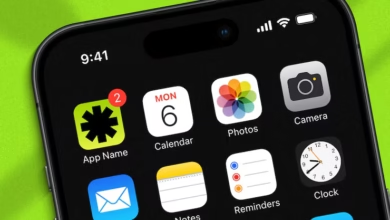
Remote triaging is helping internal medicine practices handle patient concerns more efficiently. It allows healthcare providers to assess symptoms remotely. This reduces the need for unnecessary emergency room visits. Patients can receive timely care without leaving their homes.
Let’s explore how telephone triage remote services and trained phone triage nurses are improving healthcare.

What is Remote Triaging?
Remote triaging evaluates a patient’s condition without requiring an in-person visit. A remote triage nurse uses clinical protocols to assess symptoms and urgency. Based on this, the nurse advises the patient on what to do next. This may include self-care, scheduling an appointment, or visiting the emergency room.
For example, if a patient feels mild chest discomfort, they can call a phone triage nurse. The nurse will ask specific questions to determine the severity of symptoms. Depending on the answers, the nurse may recommend rest or suggest immediate medical attention.
Why is Remote Triaging Important?
1. Reduces Emergency Room Visits
Many patients go to the emergency room for conditions that can be managed elsewhere. Telephone triage remote services help guide patients to the right level of care. This reduces unnecessary trips to the ER.
2. Saves Costs
Emergency room visits are expensive for both patients and healthcare providers. Remote triaging reduces these visits, saving money for everyone involved.
3. Improves Patient Experience
Patients appreciate receiving timely advice through remote triaging. This approach gives them peace of mind without the hassle of visiting a hospital.
4. Supports Medical Staff
By diverting non-urgent cases, Virtual Medical Assistant allow emergency staff to focus on patients who need immediate attention.
How Remote Triaging Works
| Step | Description |
| 1. Patient Call | Patients call a healthcare service to report their symptoms. |
| 2. Assessment | A remote triage nurse asks questions to understand the patient’s condition. |
| 3. Recommendations | The nurse advises self-care, schedules a doctor’s appointment, or recommends the ER. |
| 4. Follow-Up (Optional) | Some services follow up to ensure the patient’s condition has improved. |
This step-by-step process ensures that patients receive care suited to their needs. It also prevents unnecessary stress on emergency services.
Statistical Insights
| Key Metric | Impact of Remote Triaging |
| ER visits reduced | 25% fewer unnecessary visits |
| Cost savings | $400–$800 annually per patient |
| Patient satisfaction | 20% increase due to quicker responses |
| Physician time saved | 3–5 hours daily, allowing more focus on urgent cases |
These numbers demonstrate the significant benefits of implementing telephone triage remote services.
The Role of Phone Triage Nurses
A phone triage nurse plays a vital role in ensuring the success of remote triaging. These nurses are trained to assess symptoms over the phone and provide accurate advice. They use clinical guidelines to evaluate conditions and recommend the next steps.
For instance, a remote triage nurse may guide a patient with a fever to rest and stay hydrated. If symptoms point to something serious, the nurse may recommend immediate care. By asking the right questions, they can assess situations effectively.
Benefits of Remote Triaging
1. Reduces Emergency Department Crowding
When non-urgent cases are managed remotely, emergency rooms can focus on critical situations.
2. Provides Fast Advice
Patients get answers to their concerns without long waits. This saves time and ensures their condition does not worsen.
3. Improves Clinic Efficiency
Telephone triage remote services help clinics organize appointments better. Non-urgent cases can be scheduled appropriately, reducing chaos.
4. Builds Patient Confidence
Knowing they can consult a phone triage nurse gives patients reassurance. They feel supported and guided during uncertain times.
Implementing Remote Triaging in Internal Medicine
Remote triaging in internal medicine involves assessing and prioritizing patients’ medical needs through virtual communication channels, such as phone calls, video consultations, or online platforms, before in-person visits. This approach aims to streamline care delivery, optimize resource allocation, and improve patient outcomes while ensuring accessibility and safety.
Key Aspects of Remote Triaging
- Patient Assessment: Using structured questionnaires, medical histories, and symptom-checking algorithms to evaluate patients’ conditions remotely.
- Prioritization: Classifying cases based on urgency, allowing high-risk or critical patients to receive timely attention while deferring non-urgent issues.
- Technology Utilization: Leveraging telehealth platforms, electronic health records (EHR), and artificial intelligence (AI)-driven tools for efficient data collection and analysis.
- Collaboration: Enabling seamless communication between patients, primary care providers, and specialists for coordinated care.
Benefits
- Enhanced Access: Patients can receive preliminary assessments without geographic or physical barriers.
- Reduced Burden: Helps healthcare systems manage patient loads effectively by minimizing unnecessary in-person visits.
- Cost-Effectiveness: Decreases travel expenses and operational costs for both patients and providers.
- Infection Control: Limits exposure to contagious illnesses, particularly critical during outbreaks or pandemics.
Challenges and Solutions
- Technological Barriers: Ensuring that patients and providers have access to and proficiency with necessary tools. Addressed by user-friendly platforms and training programs.
- Data Security: Protecting patient confidentiality through robust encryption and adherence to privacy regulations like HIPAA.
- Clinical Accuracy: Balancing remote assessment limitations with in-person diagnostics. Enhanced by integrating advanced diagnostic tools and decision-support systems.
Step 1: Hire Experienced Remote Triage Nurses
Recruit nurses who are skilled in evaluating symptoms over the phone. They must have strong communication skills and clinical knowledge.
Step 2: Use Secure Technology
Healthcare providers must use secure communication systems. This protects patient information and ensures compliance with regulations.
Step 3: Provide Regular Training
Training helps nurses stay updated on new protocols and practices. This ensures that they offer accurate and consistent advice.
Step 4: Monitor Service Quality
Review patient feedback and call logs regularly. This helps maintain high standards in remote triaging services.
Challenges and Solutions
1. Communication Barriers
Some patients may find it hard to describe their symptoms. Nurses can overcome this by asking clear and simple questions.
2. Legal and Ethical Issues
Providers must follow strict rules to protect patient confidentiality. They must also ensure that nurses are licensed to operate across states.
3. Consistency in Service
Using standardized protocols helps ensure consistent care during every call.
Case Study: Remote Triaging in Practice
A medical practice in New York introduced telephone triage remote services to manage after-hours patient inquiries. Over six months, the practice reported a 20% reduction in non-urgent ER visits. Patients appreciated the quick access to a remote triage nurse who could provide immediate advice. The practice also noted a 30% increase in patient satisfaction scores. This approach allowed doctors to focus on more complex cases during their working hours.
Conclusion
Remote triaging is transforming how internal medicine practices manage patient care. It helps reduce unnecessary emergency room visits and saves costs. Patients benefit from timely advice while healthcare providers can focus on urgent cases. With telephone triage remote services and skilled phone triage nurses, internal medicine can deliver better outcomes for both patients and providers.
FAQs About Remote Triaging
1. What is the role of a phone triage nurse?
A phone triage nurse evaluates patient symptoms over the phone and gives appropriate guidance.
2. How does remote triaging save costs?
It prevents unnecessary emergency room visits, which are costly for patients and healthcare systems.
3. Is remote triaging suitable for emergencies?
Remote triaging can guide patients during emergencies, but it is not a replacement for emergency services.
4. How can practices implement remote triaging?
Practices can hire skilled nurses, use secure systems, and follow standardized protocols to implement remote triaging effectively.




